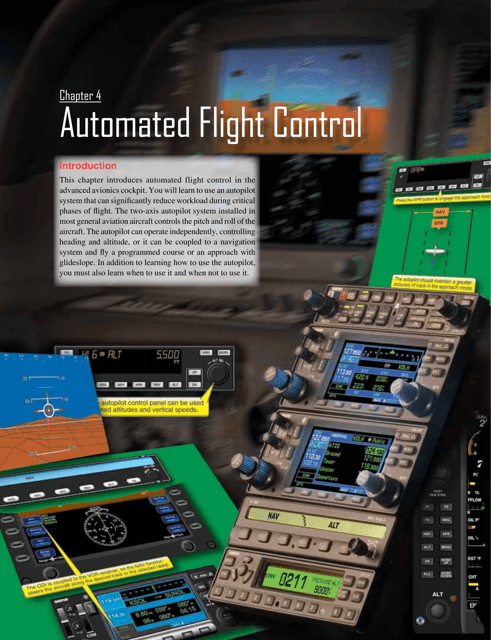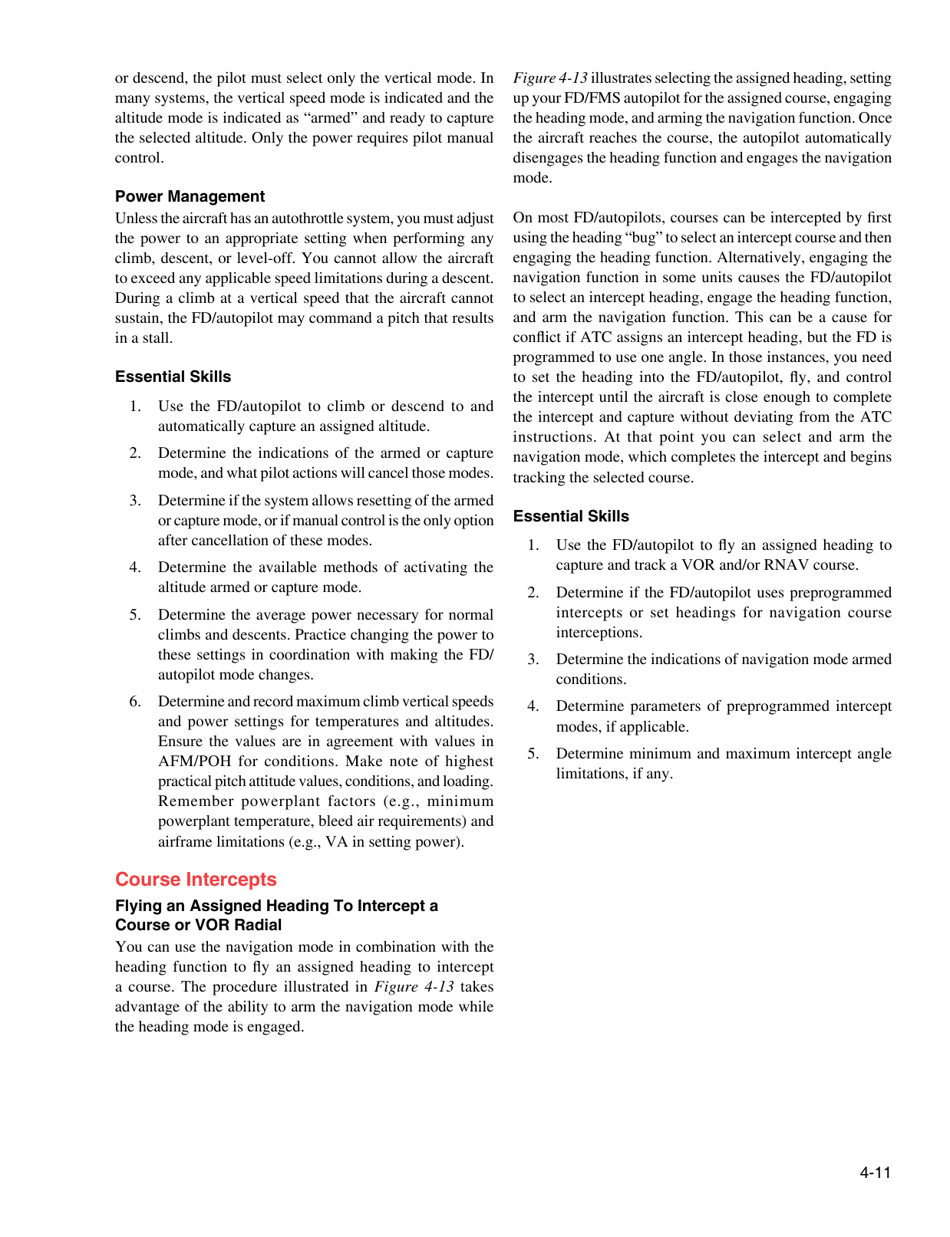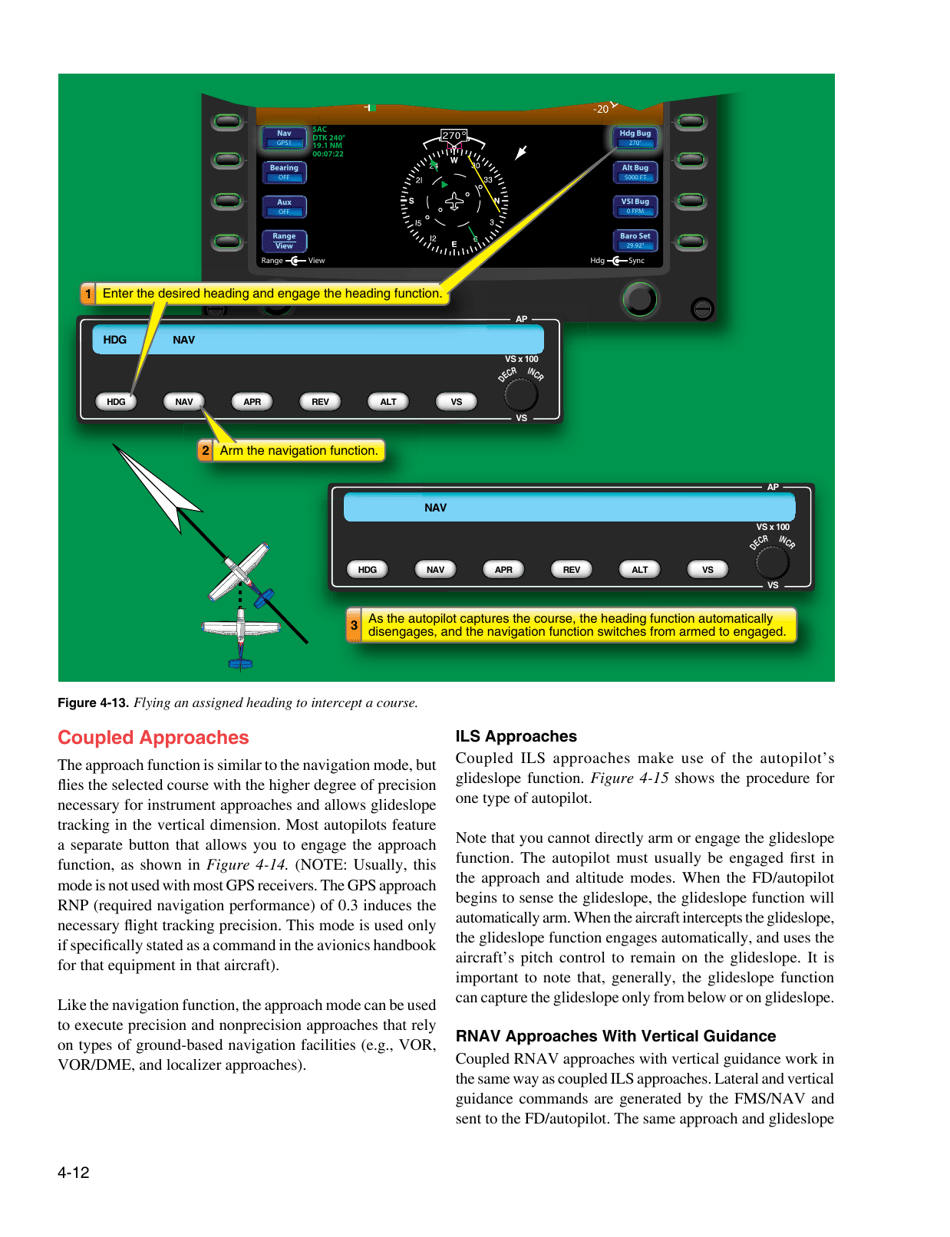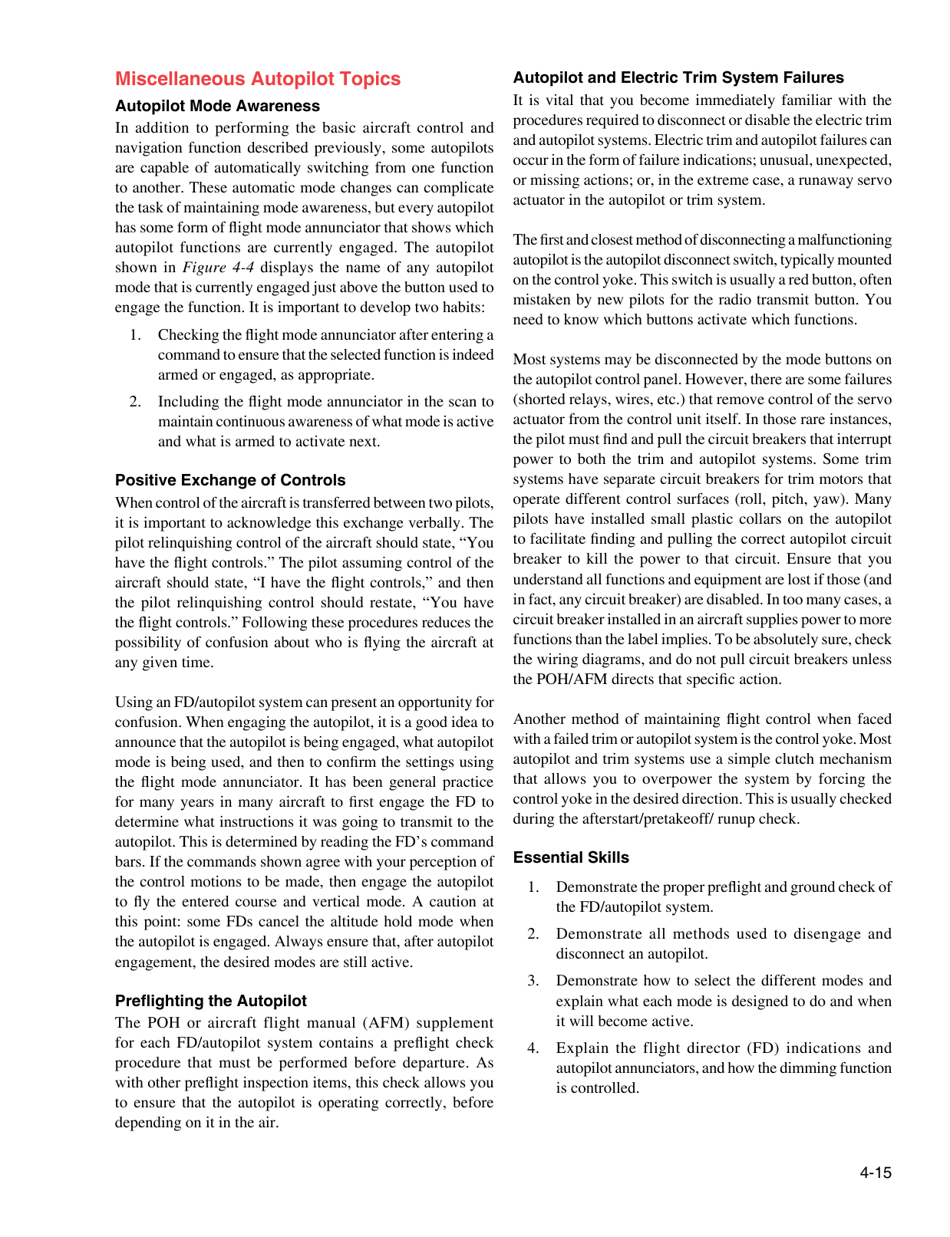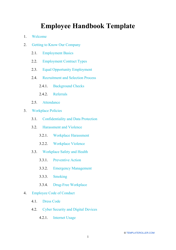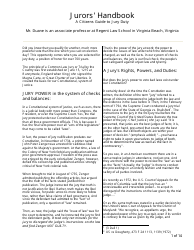Advanced Avionics Handbook - Chapter 4: Automated Flight Control
Advanced Avionics Handbook - Chapter 4: Automated Flight Control is a 16-page legal document that was released by the U.S. Department of Transportation - Federal Aviation Administration and used nation-wide.
FAQ
Q: What is the purpose of automated flight control?
A: The purpose of automated flight control is to assist pilots in controlling the aircraft and maintaining desired flight paths.
Q: What are some examples of automated flight control systems?
A: Examples of automated flight control systems include autopilots, flight directors, and autothrottles.
Q: How does an autopilot work?
A: An autopilot uses sensors and computer algorithms to automatically control the aircraft's attitude, altitude, and heading based on pilot inputs or pre-programmed flight plans.
Q: What is a flight director?
A: A flight director provides visual guidance to the pilot, indicating the desired flight path and aircraft attitude.
Q: What is an autothrottle?
A: An autothrottle automatically controls the aircraft's engine thrust to maintain a desired airspeed.
Q: What are some benefits of automated flight control?
A: Benefits of automated flight control include reduced pilot workload, improved flight precision, and increased safety.
Form Details:
- The latest edition currently provided by the U.S. Department of Transportation - Federal Aviation Administration;
- Ready to use and print;
- Easy to customize;
- Compatible with most PDF-viewing applications;
- Fill out the form in our online filing application.
Download a printable version of the form by clicking the link below or browse more legal forms and templates provided by the issuing department.
